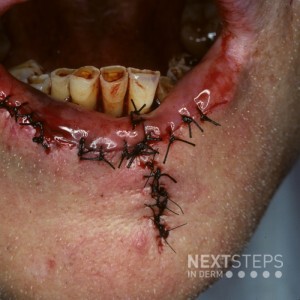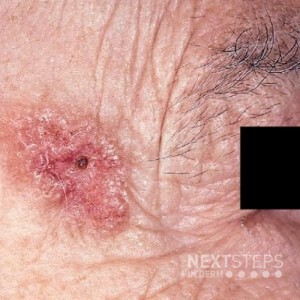Antibiotics and Acne: the Bad, the Good, and the Brand New
 Tomorrow when we arrive into clinic (or this afternoon if you are reading this during your lunch break), we will invariably be greeted with patients who struggle with one of the most common diseases we treat – acne. More than likely, we will reach for topical retinoids, topical antibiotics, and the occasional systemic antibiotic. Evidence supports the short-term use of systemic antibiotics t …
Tomorrow when we arrive into clinic (or this afternoon if you are reading this during your lunch break), we will invariably be greeted with patients who struggle with one of the most common diseases we treat – acne. More than likely, we will reach for topical retinoids, topical antibiotics, and the occasional systemic antibiotic. Evidence supports the short-term use of systemic antibiotics t …
 Tomorrow when we arrive into clinic (or this afternoon if you are reading this during your lunch break), we will invariably be greeted with patients who struggle with one of the most common diseases we treat – acne. More than likely, we will reach for topical retinoids, topical antibiotics, and the occasional systemic antibiotic. Evidence supports the short-term use of systemic antibiotics t …
Tomorrow when we arrive into clinic (or this afternoon if you are reading this during your lunch break), we will invariably be greeted with patients who struggle with one of the most common diseases we treat – acne. More than likely, we will reach for topical retinoids, topical antibiotics, and the occasional systemic antibiotic. Evidence supports the short-term use of systemic antibiotics t … Continue reading "Antibiotics and Acne: the Bad, the Good, and the Brand New"


 The following questions were submitted by attendees during the GW Virtual Acne Appraisal Conference held on July 30th, 2020. To watch the on-demand recording of each lecture presented during the conference, click here.
Topical Management of Acne – James Q. Del Rosso, DO, FAOCD
Is there any risk of minocycline foam causing minocycline-induced hyperpigmentation? Or is that more a …
The following questions were submitted by attendees during the GW Virtual Acne Appraisal Conference held on July 30th, 2020. To watch the on-demand recording of each lecture presented during the conference, click here.
Topical Management of Acne – James Q. Del Rosso, DO, FAOCD
Is there any risk of minocycline foam causing minocycline-induced hyperpigmentation? Or is that more a …  Which of the following anatomic structures is most likely to be severed during this repair?
A. Mental nerve
B. Angular artery
C. Buccal nerve
D. Inferior labial artery
E. Marginal mandibular nerve
To find out the correct answer and read the explanation, click here.
Brought to you by our brand partner Derm In-Review. A product of SanovaWorks.
…
Which of the following anatomic structures is most likely to be severed during this repair?
A. Mental nerve
B. Angular artery
C. Buccal nerve
D. Inferior labial artery
E. Marginal mandibular nerve
To find out the correct answer and read the explanation, click here.
Brought to you by our brand partner Derm In-Review. A product of SanovaWorks.
…  You are at the end of a busy afternoon clinic, with only a single patient standing between you and freedom to go visit a good friend and watch the Stanley Cup playoffs, of course after completing a metric ton of electronic charting. The chart in the door (or more likely on the EMR tablet) says “CHIEF COMPLAINT: ACNE”. Do you smile or groan? Acne vulgaris, or “common” acne, is itself among …
You are at the end of a busy afternoon clinic, with only a single patient standing between you and freedom to go visit a good friend and watch the Stanley Cup playoffs, of course after completing a metric ton of electronic charting. The chart in the door (or more likely on the EMR tablet) says “CHIEF COMPLAINT: ACNE”. Do you smile or groan? Acne vulgaris, or “common” acne, is itself among …  This patient presents for Mohs surgery. What is the deepest layer that you can undermine in this area?
A. Epidermis
B. Dermis
C. Subcutaneous fat
D. Superficial muscular aponeurotic system (SMAS)
E. Muscle
To find out the correct answer and read the explanation, click here.
Brought to you by our brand partner Derm In-Review. …
This patient presents for Mohs surgery. What is the deepest layer that you can undermine in this area?
A. Epidermis
B. Dermis
C. Subcutaneous fat
D. Superficial muscular aponeurotic system (SMAS)
E. Muscle
To find out the correct answer and read the explanation, click here.
Brought to you by our brand partner Derm In-Review. …